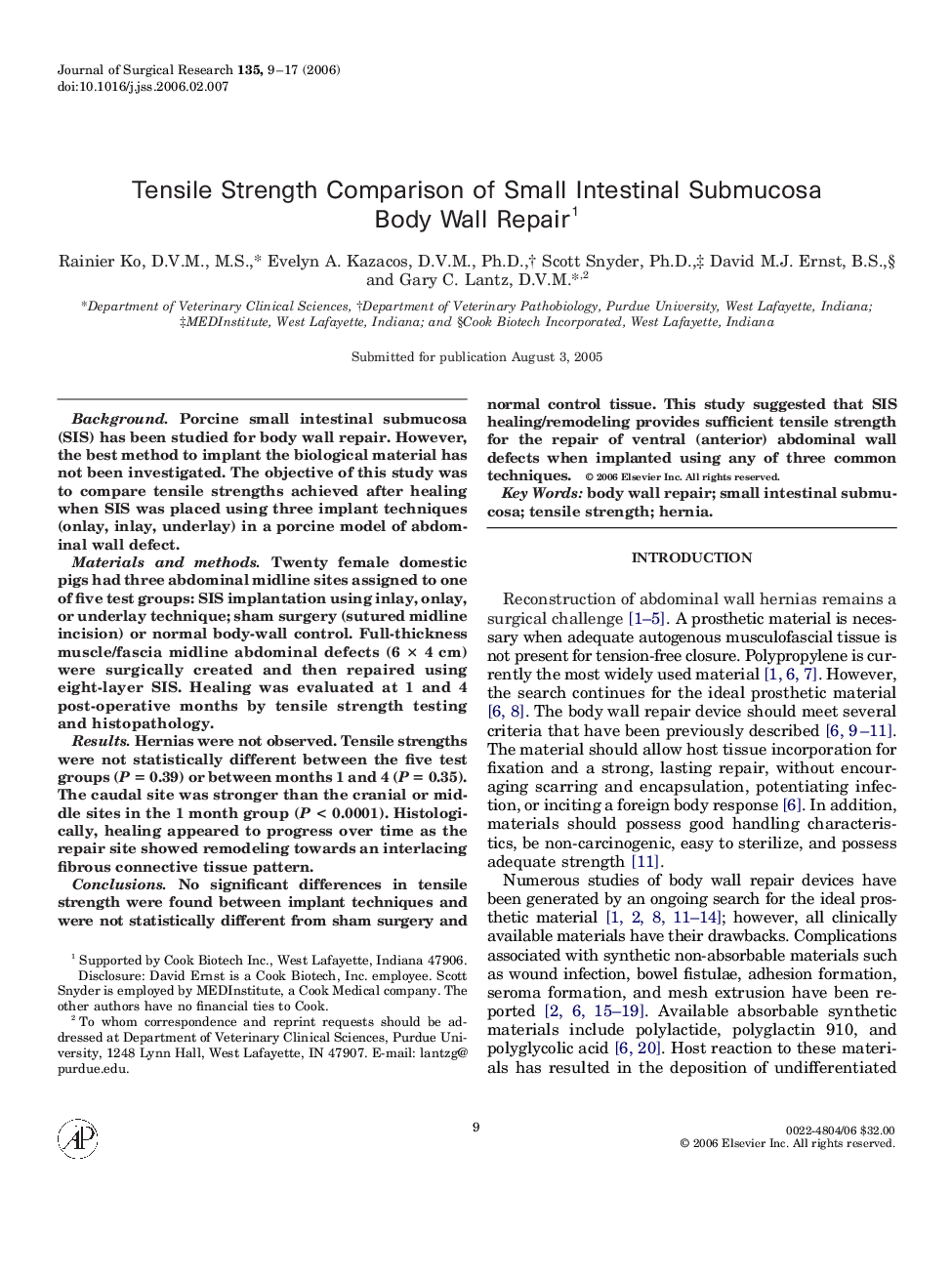| Article ID | Journal | Published Year | Pages | File Type |
|---|---|---|---|---|
| 4304921 | Journal of Surgical Research | 2006 | 9 Pages |
BackgroundPorcine small intestinal submucosa (SIS) has been studied for body wall repair. However, the best method to implant the biological material has not been investigated. The objective of this study was to compare tensile strengths achieved after healing when SIS was placed using three implant techniques (onlay, inlay, underlay) in a porcine model of abdominal wall defect.Materials and methodsTwenty female domestic pigs had three abdominal midline sites assigned to one of five test groups: SIS implantation using inlay, onlay, or underlay technique; sham surgery (sutured midline incision) or normal body-wall control. Full-thickness muscle/fascia midline abdominal defects (6 × 4 cm) were surgically created and then repaired using eight-layer SIS. Healing was evaluated at 1 and 4 post-operative months by tensile strength testing and histopathology.ResultsHernias were not observed. Tensile strengths were not statistically different between the five test groups (P = 0.39) or between months 1 and 4 (P = 0.35). The caudal site was stronger than the cranial or middle sites in the 1 month group (P < 0.0001). Histologically, healing appeared to progress over time as the repair site showed remodeling towards an interlacing fibrous connective tissue pattern.ConclusionsNo significant differences in tensile strength were found between implant techniques and were not statistically different from sham surgery and normal control tissue. This study suggested that SIS healing/remodeling provides sufficient tensile strength for the repair of ventral (anterior) abdominal wall defects when implanted using any of three common techniques.
